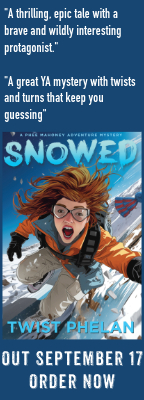by Noah Whitaker
Noah J. Whitaker is the coordinator of the Tulare & Kings Counties Suicide Prevention Task Force, and the Community Outreach Manager for the Tulare County Health & Human Services Agency. He writes a monthly column for KRL on mental health and suicide prevention.
The holidays are a magical time. It is as if the glitter and twinkle of lights, the reddening of noses, and an echoed cough or sneeze all coalesce into the spirit of the season. This is the time of year I look forward to most. People tend to give a little more of themselves be it time, finances, or simple good will. Life becomes a little better.
 There is a notion that persists in the minds of most people that winter is the worst time for suicides. This belief is a bit of common sense that is incorrect. I think this concept entered our social consciousness due to the James Stewart character in It’s a Wonderful Life. Since 1946, George Bailey has annually stood on a bridge in a moment of desperation, and we have journeyed with him through his life in search of hope. This beloved holiday film was one of the few instances of an accurate portrayal of a person struggling with choosing to live or die. I argue that the imagery of this film became etched into so-called common knowledge, and helped shape our understanding of suicide. The truth is that suicide rates dip in the winter and grow in the spring and fall. This is just one of the many paradoxes that surround suicide.
There is a notion that persists in the minds of most people that winter is the worst time for suicides. This belief is a bit of common sense that is incorrect. I think this concept entered our social consciousness due to the James Stewart character in It’s a Wonderful Life. Since 1946, George Bailey has annually stood on a bridge in a moment of desperation, and we have journeyed with him through his life in search of hope. This beloved holiday film was one of the few instances of an accurate portrayal of a person struggling with choosing to live or die. I argue that the imagery of this film became etched into so-called common knowledge, and helped shape our understanding of suicide. The truth is that suicide rates dip in the winter and grow in the spring and fall. This is just one of the many paradoxes that surround suicide.
I’ve read numerous articles, spoken with researchers, and attended sessions in conferences that explored this phenomenon. I have found no definitive answers, but I tend to believe this is the result of two main factors: holiday spirit, and the immobilizing effects of depression.
As I mentioned in my introduction, the holidays tend to be a time in which people go a little further to be tolerant of one another. Nearly every family has a Cousin Eddie. We, like the Griswolds, welcome them into our homes during the holidays. Family connectedness is a protective factor. When the holidays end, as with aging fruitcake, we toss them out. The protection begins to ebb away.
The second factor, I believe, is directly related to the nature of depression, and is another paradox in our understanding of suicide. Deeply depressed people don’t tend to die by suicide while they are deeply depressed. The riskier time is when depression begins to lift. This flies in the face of our expectation that the depressed person is beginning to pull out of it, and we develop a sense of relief. Then, suddenly, they are in the hospital or are gone forever. One of the drivers of this effect is that when depression is at its devastatingly worst, it is difficult to do anything. Once a victim of depression begins to feel better, they suddenly have the energy to carry out the plans they formulated while in the darkness; frequently, they fear slipping back into the depression. This paradox can lead to a great deal of trauma if the unexpected occurs.
This is not to say that suicides do not occur in winter. They do. In fact, over the last two decades the numbers of winter suicides has been slowly but steadily increasing, and has increased at a slightly higher pace than population growth. This is to say that this winter likely had more deaths than last winter, but winter still tends to have fewer deaths than do spring or summer. If one were to look only at winter and the numbers, one would think we have a pervasive problem that is mounting in winter months. When the full calendar year is taken into account, however, and examined over time, we begin to see the trends mentioned above.
Now that we’ve explored that, let’s talk about what you can do to help save lives at any time of the year.
Know that the National Suicide Prevention Lifeline exists. No, I don’t expect you to memorize 1-800-273-8255, though it would be nice if you did. Remembering how to find the number is easier than you might think. Simply open your friendly Google search engine and type the word ‘suicide.’ The very first thing that will appear is the number for the lifeline. This is a 24/7 resource, is available in English and Spanish, and offers additional specialized support for veterans.
Know the Signs. Through 2004’s Proposition 63, the Mental Health Services Act, California has a statewide campaign for suicide prevention branded Know the Signs. On their website you can learn some of the basic symptoms of suicide risk. If you notice these signs in yourself or others, Google the word ‘suicide’ and contact the lifeline.
Become trained. Suicide prevention has become a topic that is receiving increasing attention. Some areas offer access to training such as Mental Health First Aid (MHFA), Applied Suicide Intervention Skills Training (ASIST), Question, Persuade, Refer (QPR), and others. There are also organizations such as the National Alliance on Mental Illness (NAMI) that offer training, education, and support groups. If this training isn’t available in your area, you could reach out to one of the national organizations and see if you can bring it to your area. You might need to conduct some fundraising to do so, but it will be worth it.
Ask and listen. This can be very challenging for some, but if you are concerned that someone might be at risk, ask them, “Are you thinking about suicide?” Asking them this question will not put the idea into their mind, but you might find that they’ll honestly answer it. If you do ask, listen. Let them talk about what is going on. Do not judge them. Do not rush to “save” them. Be calm. Be supportive. If they are suicidal do not leave them alone, ensure that they get connected with someone who can help, such as their primary care physician, a local mental health professional, and yes, reach out to the National Suicide Prevention Lifeline. It is not your responsibility to fix them or save their lives, but these actions might just help that to happen.
Take care of yourself. The holidays can be a stressful time physically, mentally, and financially. Whether you are the person who is at risk, or you’re trying to help someone who is, remember that you have to set aside time and energy just for yourself. That isn’t selfish, it is survival. Enjoy a hot bath, or go to the theater and watch a film, sit on a bench and people watch, or do whatever it is that you enjoy. Do it for you. You cannot help someone else if you are not taking care of yourself too.
If you or someone you know is at risk for suicide, please contact the National Suicide Prevention Lifeline at 1 (800) 273-8255.
If you would like to learn more about the SPTF, refer to the contact information.
For Non-Crises Information Related to the SPTF:
Suicide Prevention Task Force
C/O Noah Whitaker
5957 S. Mooney Blvd.
Visalia, CA 93277
(559) 624-7471
Coordinator’s Email: sptf@tularehhsa[dot]org
Facebook: www.facebook.com/HOPE.SPTF
Website: www.sptf.org
Check out KRL’s Mental Health section for more mental health related articles.















0 Comments